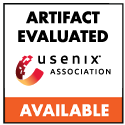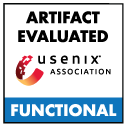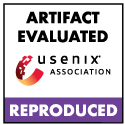Apurva Virkud, Muhammad Adil Inam, Andy Riddle, Jason Liu, Gang Wang, and Adam Bates, University of Illinois Urbana-Champaign
MITRE ATT&CK is an open-source taxonomy of adversary tactics, techniques, and procedures based on real-world observations. Increasingly, organizations leverage ATT&CK technique "coverage" as the basis for evaluating their security posture, while Endpoint Detection and Response (EDR) and Security Indicator and Event Management (SIEM) products integrate ATT&CK into their design as well as marketing. However, the extent to which ATT&CK coverage is suitable to serve as a security metric remains unclear— Does ATT&CK coverage vary meaningfully across different products? Is it possible to achieve total coverage of ATT&CK? Do endpoint products that detect the same attack behaviors even claim to cover the same ATT&CK techniques?
In this work, we attempt to answer these questions by conducting a comprehensive (and, to our knowledge, the first) analysis of endpoint detection products' use of MITRE ATT&CK. We begin by evaluating 3 ATT&CK-annotated detection rulesets from major commercial providers (Carbon Black, Splunk, Elastic) and a crowdsourced ruleset (Sigma) to identify commonalities and underutilized regions of the ATT&CK matrix. We continue by performing a qualitative analysis of unimplemented ATT&CK techniques to determine their feasibility as detection rules. Finally, we perform a consistency analysis of ATT&CK labeling by examining 37 specific threat entities for which at least 2 products include specific detection rules. Combined, our findings highlight the limitations of overdepending on ATT&CK coverage when evaluating security posture; most notably, many techniques are unrealizable as detection rules, and coverage of an ATT&CK technique does not consistently imply coverage of the same real-world threats.
Open Access Media
USENIX is committed to Open Access to the research presented at our events. Papers and proceedings are freely available to everyone once the event begins. Any video, audio, and/or slides that are posted after the event are also free and open to everyone. Support USENIX and our commitment to Open Access.

author = {Apurva Virkud and Muhammad Adil Inam and Andy Riddle and Jason Liu and Gang Wang and Adam Bates},
title = {How does Endpoint Detection use the {MITRE} {ATT\&CK} Framework?},
booktitle = {33rd USENIX Security Symposium (USENIX Security 24)},
year = {2024},
isbn = {978-1-939133-44-1},
address = {Philadelphia, PA},
pages = {3891--3908},
url = {https://www.usenix.org/conference/usenixsecurity24/presentation/virkud},
publisher = {USENIX Association},
month = aug
}



